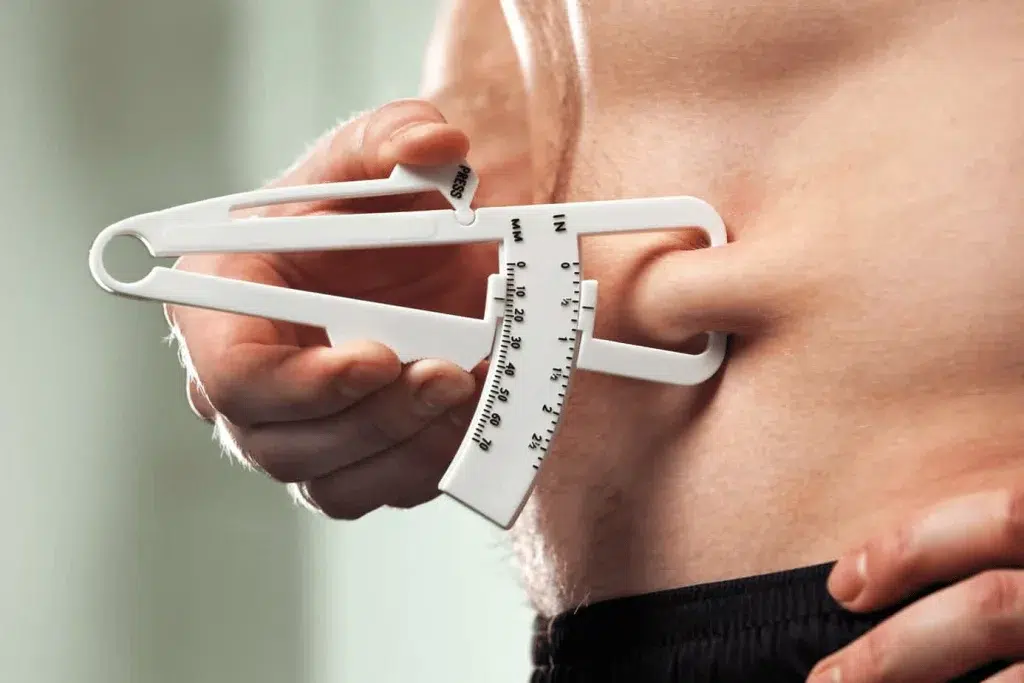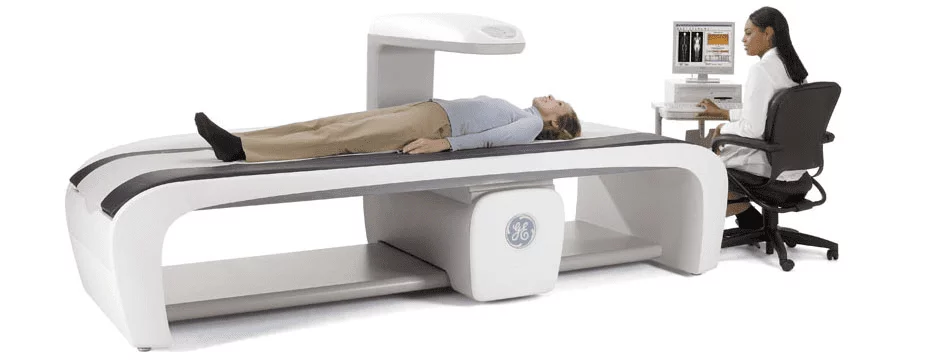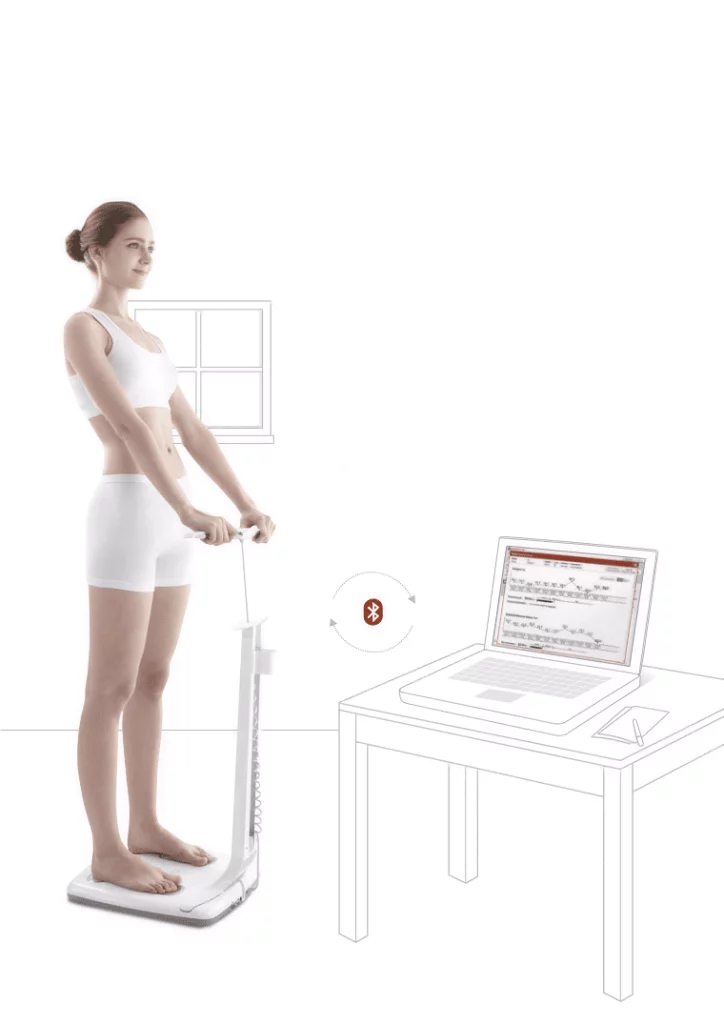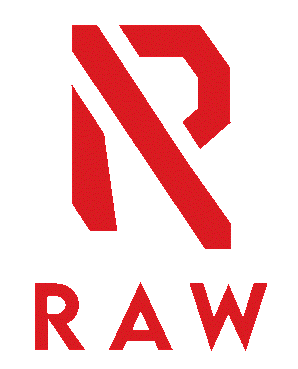Have you ever stepped on a scale and noticed that no change is happening? You’ve eaten the right meals, followed every exercise regimen in the book and even hired a personal trainer. The numbers just seem to never budge, so how are you supposed to hit your goals by the end of the month?
Chances are, you’re making a lot of progress more than you know but you’re focused on the wrong thing. The question you should ask yourself is this: What kind of weight are you really losing? Are you trying to lose fat or lose weight?
Contrary to popular belief, fat and weight loss aren’t the same. You’ve probably used them interchangeably, but there are clear scientific differences between them. Learning about these key differences can help you on your health journey and set the right fitness goals.
Continue reading below and let’s get on it right away!
Defining Fat Loss and Weight Loss: What’s Their Difference?
To determine the differences between fat loss and weight loss, let’s discuss their definitions first. Let’s break it down below:
What Is Weight Loss?
According to CK Birla Hospital dietician Dr Prachi Jain, weight loss is the reduction in the total body weight due to various body components such as muscle, fat and water. In layman’s terms, it’s the overall drop in your kilogram weight.
Weight loss typically takes place when you burn more calories than you consume.
There are other factors that can influence weight fluctuations, including eating and physical activity habits, hormonal changes and varying sodium intake. This means that it can either happen intentionally or unintentionally—due to underlying health conditions, malnourishment or an active lifestyle.
The benefits of weight loss include an increase in energy, the regulation of blood sugar, heart improvement and improved mobility. Intentional weight loss can also reduce your chances of getting strokes when you get older.
What Is Fat Loss?
Fat loss is considered to be a more healthful goal when compared to weight loss. It occurs when there’s a percentile and specific drop in body fat level, or to put it simply—it refers to weight loss strictly from fat.
What you need to remember is that there are two main types of fat found in the human body: essential body fat and non-essential body fat. The former is important in maintaining the natural structure of your body, making sure that you function properly.
The latter, on the other hand, is stored in adipose tissue (storage fat). It is the fat you lose when you start the fat loss journey.
Sometimes, when people usually talk about wanting to lose weight, what they truly mean is they want to lose fat. This is because fat loss allows a person to maintain a good amount of muscle mass while still giving you that toned and fit look.
Just like weight loss, it’s possible to lose fat by reducing the number of calories you take in. You also need to pay attention to the nutritional value of your daily meals. This includes macronutrient consumption that consists of fat, carbohydrate and protein.
However, a significant drop in body fat does not necessarily mean that you’d see changes on the weighing scale. It may not even result in complete weight loss, depending on what’s happening in your body.
Let’s give you an example. Say you’re undergoing rigorous strength training. During this process, your weight may go up or stay the same because even though you’re losing fat, your body is gaining muscles (i.e., gaining 2 lbs of muscle yet losing 1 lb of fat).
And unlike weight loss, fat loss cannot be measured or mapped using a weighing scale. This is why some health experts argue that what you typically see on the weighing scale doesn’t truly determine how much fat you’ve lost.
Fat Loss vs Weight Loss: Which Should You Aim For?
Now that you know the definitions of fat loss and weight loss, you might wonder which one you should aim for. Which option will be healthier for you?
Of course, the answer would entirely depend on your fitness goals. Both weight loss and fat loss can help you drop kilos, fit into your old clothes again and make you look thinner, among other things.
But if you’re going for healthier body composition, fat loss should be at the top of your priority list.
To understand this reason better, let’s take a quick look at body composition first:
Body Composition Explained
Keep in mind that our bodies are made up of two major components: fat and lean body weight or fat-free mass. The latter includes bone, water, organs, muscles and many more.
To accurately know your body weight on a deeper level, you can undergo a body composition analysis. This will help you determine the lean muscle mass, bone density and body fat percentage.
So, when you want to achieve a healthy body composition, you should reduce your body fat percentage while adding lean muscle tissue. What is the logical reason behind this?
You might argue that muscle weighs more than fat, which is a popular saying in fitness circles. However, this doesn’t wholly encapsulate the entire picture.
Technically, two pounds of muscle and two pounds of fat weigh the same amount. But what you need to remember is that two things that have the same weight can have different sizes. For example, a relatively small stone that weighs a pound doesn’t take up so much space compared to a pound of feathers.
This applies to muscle and body fat. Remember that muscle tissue is much denser in terms of energy than fat tissue, so it would occupy less physical space. When this happens, you will look toned and slimmer in the long run.
Aim For Fat Loss, Not Weight Loss
Every time someone tries to lose weight, they also decrease their fluid density, muscle and fat levels. Consequently, it leads to a reduction in lean body mass which can be extremely harmful to your health and bodily functions.
It includes an increased risk of injury, lowered metabolism and fatigue, among many others.
Additionally, weight loss in the form of losing muscle may reduce your body’s capacity to burn calories. Meaning to say, this might increase your risk of weight regain.
On the flip side, focusing on fat loss maintains muscle mass, decreases the chances of chronic diseases and gets rid of excess fat. And with a healthy amount of muscle tissue, you can burn more calories, gain strength and be more agile!
Maintaining your muscle mass also lessens the risk of age-related muscle loss, resulting in disability.
Fat Loss and Muscle Gain: How To Burn Fat And Preserve Muscle
One of the hardest things that you may encounter is how you can burn fat without losing muscle and potentially putting your health on the line. What’s the secret sauce? What are the tips you need to follow to make sure everything works out just fine?
Let’s get started with these simple yet effective tricks in the book:
Tip # 1: Keep Your Protein Intake High
Consuming an optimal amount of protein is arguably the most important step in maintaining muscle mass while shedding fat. It reduces hunger and supplies amino acids—the building blocks of protein.
And since protein requires more energy to digest than fat or carbs, your metabolism rate increases.
It’s recommended that you consume at least one gram of protein per pound of body weight. Don’t forget that you must only get protein from clean and healthy sources like almonds, quinoa, eggs, lean meats, low-fat or nonfat dairy, etc.
For more information on the daily amount of dietary protein your body needs, try using a protein calculator.
Tip # 2: Start A Tiny Caloric Deficit
If you truly want to lose fat, you need to create a slight caloric deficit in your daily meals.
When you consume fewer calories than your body burns, it forces itself to find other sources of energy like fat. The downside to this is your body won’t just fully depend on fat to produce energy.
Your muscles could be a part of the damage, which is why you should avoid large caloric deficits. This might mean avoiding a crash diet plan or removing entire food groups from your meals.
For starters, decrease your portion sizes by about 10 per cent. It doesn’t have to be accurate, but you need conscious effort to make it smaller each time you eat. That way, you increase your chances of actively losing fat without sacrificing muscle size.
Tip # 3: Use Slow Aerobic Cardio
When it comes to fat loss, cardio training is part of the game. But here’s the catch: the kind of cardio exercise you perform can either make or break your fat loss and muscle gain.
This is why you must use easy methods of aerobic exercise including chill bike rides, light jogging sessions and treadmill walking. Sticking to an easy pace only uses your Type I muscle fibres, promoting better blood circulation and resisting extreme fatigue.
Aside from that, it enhances your overall aerobic energy system for faster recovery between workouts and improved stamina for intense workouts.
Tip # 4: Consider Resistance Training
Also called strength training, resistance training is a form of exercise that is best suited for stimulating muscle protein synthesis. With a balanced workout plan that targets every main muscle group, your body increases muscle mass and prevents muscle loss simultaneously.
This is where compound exercises come into play. You must focus on exercise routines that allow large muscle groups to pull off a full range of motion. It includes:
- Barbell deadlift
- Squat
- Bench step-ups
- Resistance band exercises
- Push-ups
Exercise classes like Pilates, yoga and tai chi can also be one of your choices. Just make sure that you don’t instantly put so much pressure on yourself. Start slow and easy so you don’t get injured in the process.
Tip # 5: Allow Yourself To Recover
A lot of people embracing an active lifestyle make the mistake of pushing their bodies beyond their limits. Somehow, they always think that they are invincible, believing that taking a short break from the gym can immediately set them back.
Yes, regular workouts are important in the fat loss and muscle gain process. However, recovery should still be a huge part of your priorities. If you work yourself to the bone, it can eventually lead to muscle protein breakdown. And what could be more counterproductive than that?
Bear in mind that you’re putting yourself under extreme stress of heavy lifting and calorie restriction. The best way you can do to make up for your body is to give it enough downtime. Let your muscles build and recover before you hit the gym again.
For example, you need seven to eight hours of sleep every night to lower your stress levels. If you fail to do so, your body will hold onto fat and short-change your muscle growth.
Measuring Body Fat: How To Monitor Fat Loss
If you’re just beginning to turn your life around and start a healthy lifestyle, then you’re likely using the weighing scale as the benchmark of success. But like we’ve discussed above, it doesn’t tell you the whole story; it’s just a tiny part of the pie.
And since aiming for fat loss is a more ideal goal than weight loss, how can you exactly measure and monitor your progress? What are the tools and equipment you need to keep track of where you are in your fat loss journey?
Take a closer look at the best ways to measure body fat:
Skinfold Calipers

Image source: Science For Sport
A skinfold caliper is an instrument used to measure the skinfold thickness, particularly the subcutaneous fat which can be found underneath the skin.
Measurements are usually taken at three to seven various areas of the body. For women, the area near the armpit, the chest and the area under the shoulder blade are measured for the 7-site measurement. And for the 3-site measurement, the thigh, triceps and the area above the hip bone are measured.
Meanwhile, the 3-site measurement for men includes the abdomen and thigh, the chest, and the body part above the scapula.
What makes the skinfold calipers recommendable for measuring fat is they are affordable and portable. They can also be taken quickly at home, so a trip to the doctor is out of the picture!
However, to get an accurate measurement, practice and knowledge of basic anatomy are required. Measurement errors might happen, especially if the person performing the skinfolds isn’t cut out for the job.
Dual-Energy X-ray Absorptiometry (DEXA)

Image source: Kansas Imaging Consultants
Considered to be the gold standard of body composition testing, Dual-Energy X-ray Absorptiometry (DEXA) uses low-radiation x-ray to measure body fat levels. The process involves a person lying on their back for about 10 minutes while an x-ray scans over them during the scan.
DEXA is one the most well-known methods that provides a complete and accurate breakdown of bone, lean mass and fat in various body regions.
It also has more consistent results than other methods, but it is mostly available in private practice, universities and selected hospitals.
Body Circumference Measurements
If you opt for DIY methods that can be done at home, another way to measure body fat is through circumference measurements (CM). In fact, even the United States Army uses the CM metric to determine the body fat calculation of its service members.
It mainly uses a tape measure to take measurements of certain areas of the body. When you have the measurements, they will be included in an equation to calculate the body fat percentage.
Make sure that you take circumference measurements three times at every anatomical region using a non-stretch tape measure. Record them to the nearest half-inch!
Another thing to remember is measuring sites and equations will vary by sex. Women should measure their necks, waists and hips, while the measurements of the neck and the waist are needed for men.
The equation for men is:
% body fat = 86.010 x log10 (abdomen – neck) – 70.041 x log10 (height) + 36.76
The equation for women is:
% body fat = 163.205 x log10 (waist + hip – neck) – 97.684 x log10 (height) – 78.387
This method may seem extremely simple on the surface. However, you need to take measurements accurately to obtain the correct result when computing the equations above.
Bioelectrical Impedance Analysis (BIA)

Bioelectrical Impedance Analysis (BIA) is a non-invasive technique for measuring a person’s body composition through the electrical current that travels through the body. These electrical currents move faster through muscle than fat since the former has higher water content.
An example of this is a smart scale.
Smart scales may look like traditional weighing scales, but they don’t just focus on your weight alone. They display a host of body composition stats that include your body fat percentage, which can be connected to a fitness app for tracking.
The most important component of smart scales is the foot-to-foot impedance meter (FFI). Once you step foot on the scale, the FFI sends tiny electrical impulses through the body and evaluates how fast the response is to estimate body fat and muscle mass.
Although smart scales are gaining traction in the market, a study found that the smart scales tested were not as accurate as a DEXA scan in measuring body composition. However, this doesn’t mean to say that using a smart scale is futile. It just means that the accuracy of this method can widely vary, especially depending on one’s food and fluid intake.
Even though they aren’t the most accurate tool, they can be an easy way to obtain a general picture of your body fat percentage at home. Just make sure you get high-quality ones!
Another example of Bioelectrical Impedance Analysis is what RAW offers. The InBody analysis is considered to be one of the best methods for accurately measuring body fat percentage, obtaining up to 98% accuracy which is almost similar to a DEXA scan.

RAW’s InBody machine covers all the bases when it comes to calculating body composition, including:
- Body fat levels
- Muscle mass
- Overall fitness score
- Water weight
- Muscle imbalance
- Basal metabolic rate
- Visceral fat levels
Once you take the test, you can get the results in less than five minutes. A tracking system is also available to help you keep track of your progress!
Hydrostatic Weighing

Image source: Healthline
Also known as underwater weighing or hydrodensitometry, hydrostatic weighing measures your overall density to determine your body fat. Since fat is less dense than muscle and bone, a person with a higher fat percentage weighs less underwater.
Test administrators will measure your body weight on land and underwater. Between these two measurements, your body density and body fat percentage are calculated.
It only takes approximately 15 minutes to undergo hydrostatic weighing. And unlike electrical impedance body fat tests, this method is safer for people with pacemakers.
However, most tanks can only be found in academic institutions and universities.
Final Thoughts
There you have it, folks.
Understanding the difference between fat loss and weight loss can hugely affect your fitness plans. By keeping track of your body composition numbers, eating the right meals and exercising, you are focusing on fat loss which will give you long-term changes you’d never see coming.
Of course, it just doesn’t happen in the blink of an eye. Depending on the level of your commitment and willpower, it can take a little longer.
But here’s a question: Would you rather drop an impressive number of pounds in just half a year just to regain all of it in a snap, or invest in the small things that can result in efficient changes to your lifestyle?
There’s no one in this world who knows your body better than you. But if you ever need some guidance, RAW has your back. If you’re ready to revamp your lifestyle to focus on fat loss instead of weight loss, our personal training program can help you build the right workout regimens and nutrition plans.
To help you track your progress and measure your body fat percentage, our InBody 120 body composition test is also at your service.
You can change your life with just a click. Book a free consultation with us today and kickstart your workout sessions with the most competent trainers in Singapore.
- Reverse Lunges: Benefits and Techniques - April 1, 2024
- Enhance Your Life – Elevate Your Cardiovascular Fitness Today - March 18, 2024
- Achieving Cellular Youthfulness: How Lifestyle Modifications Can Lengthen Telomeres - March 12, 2024

6 Responses